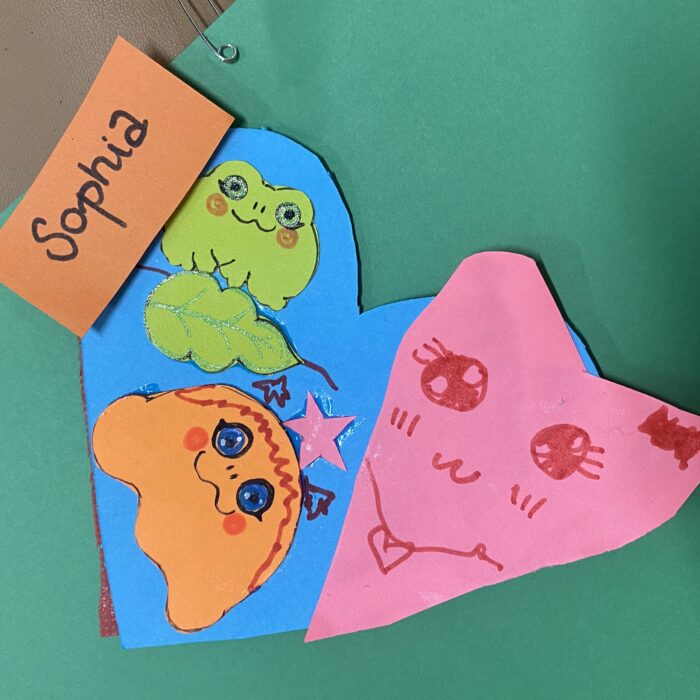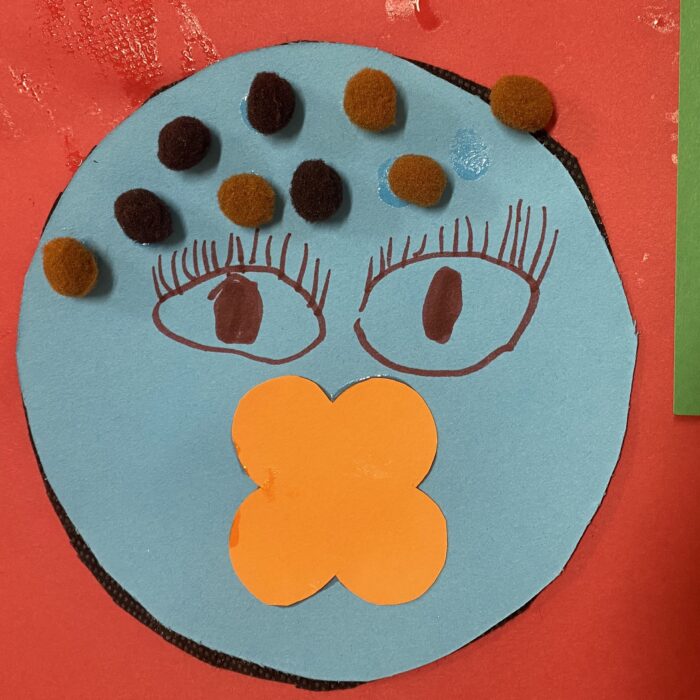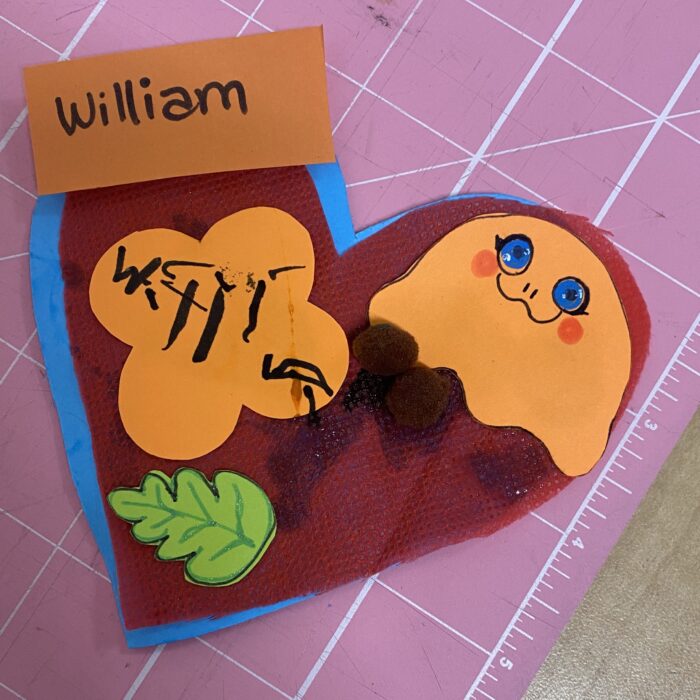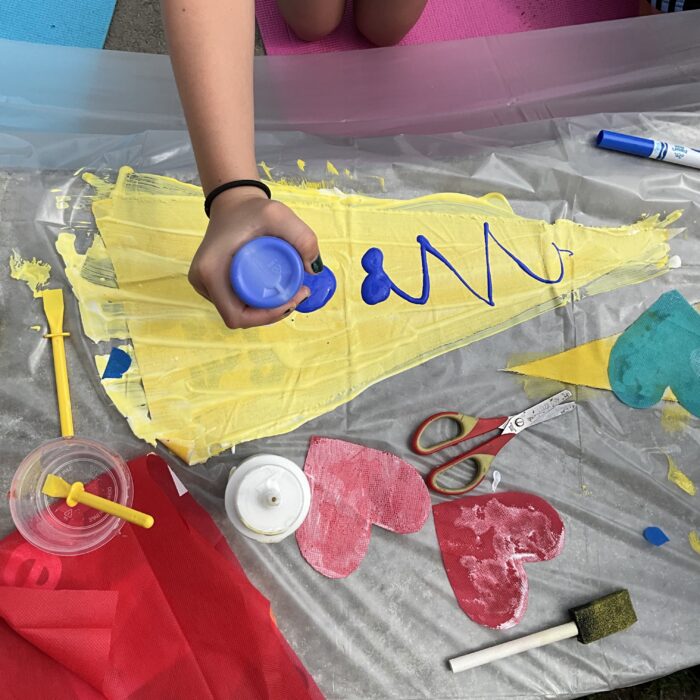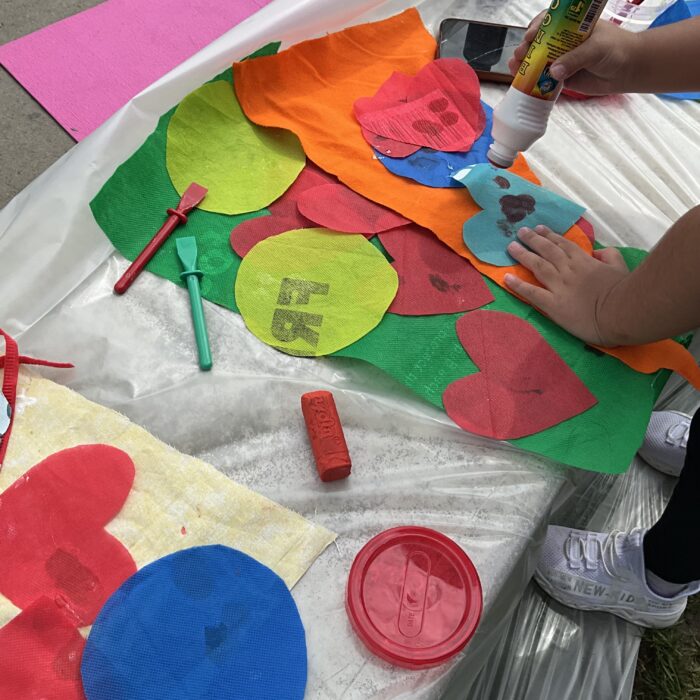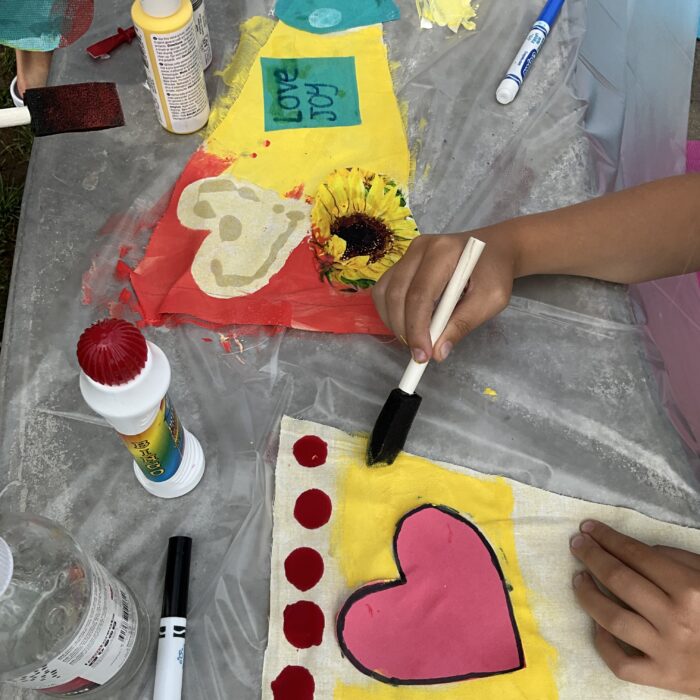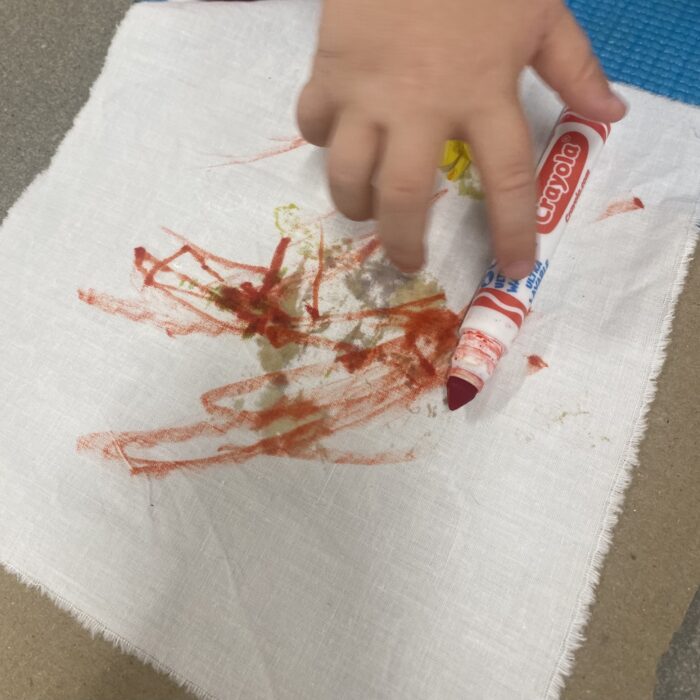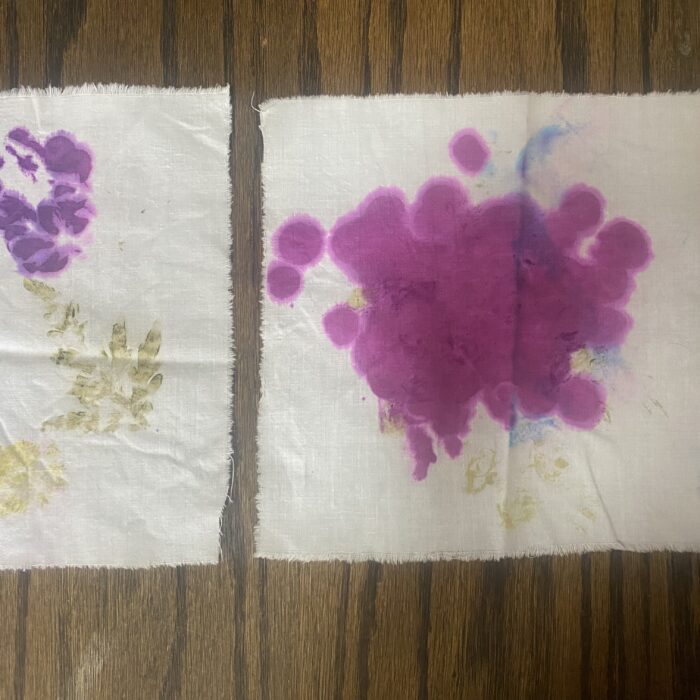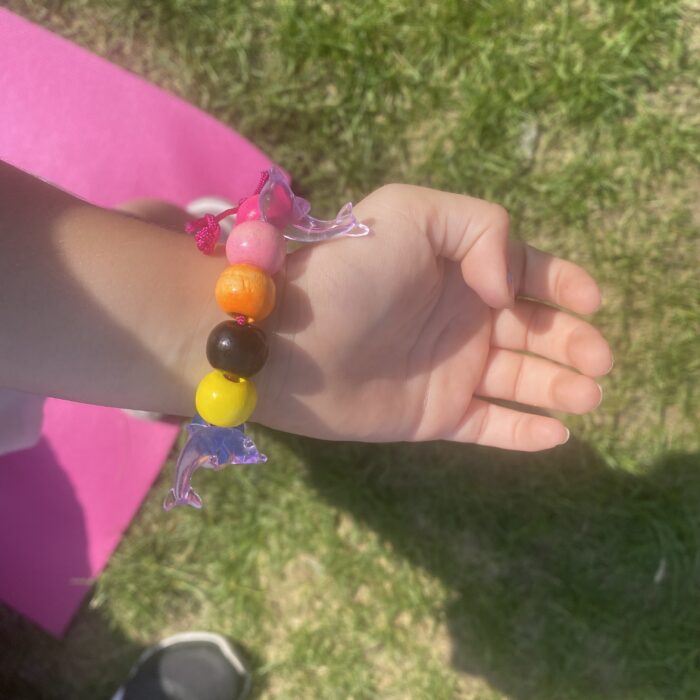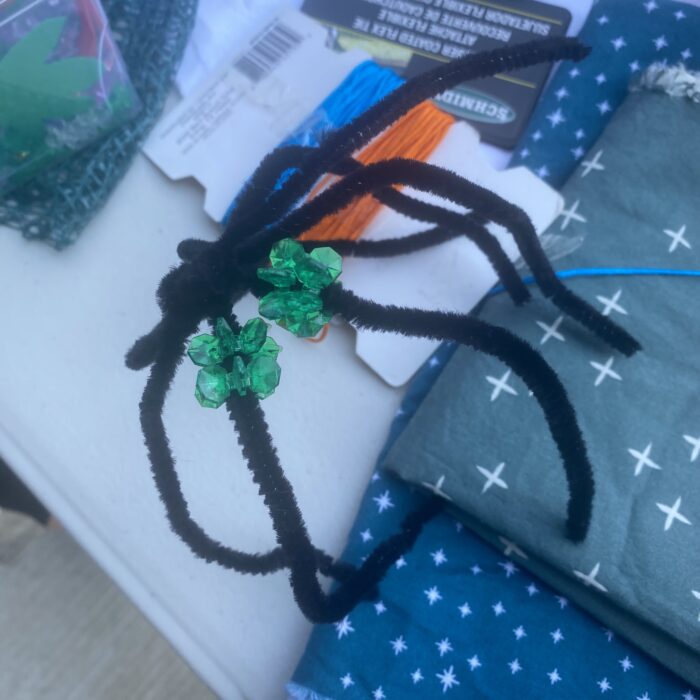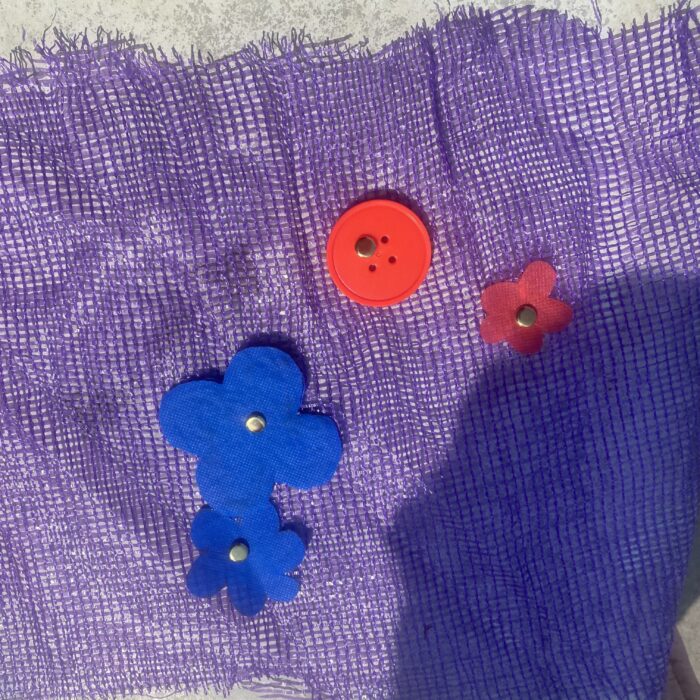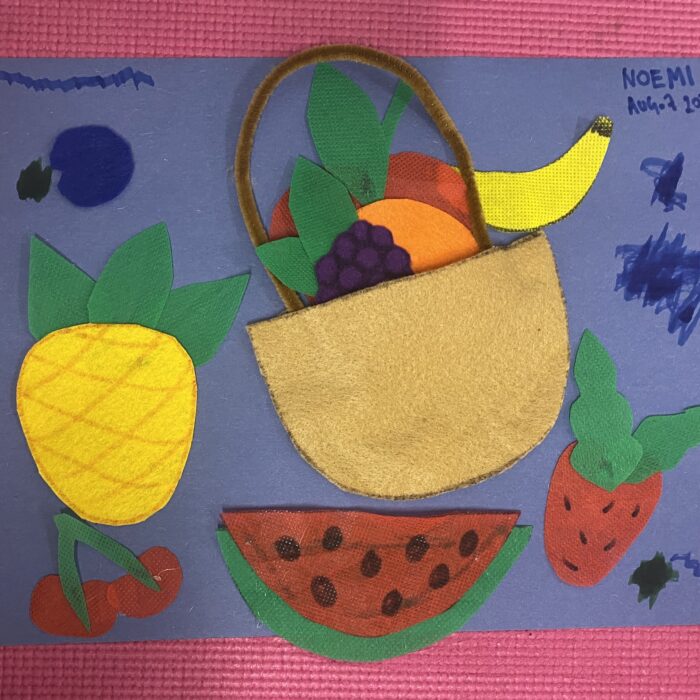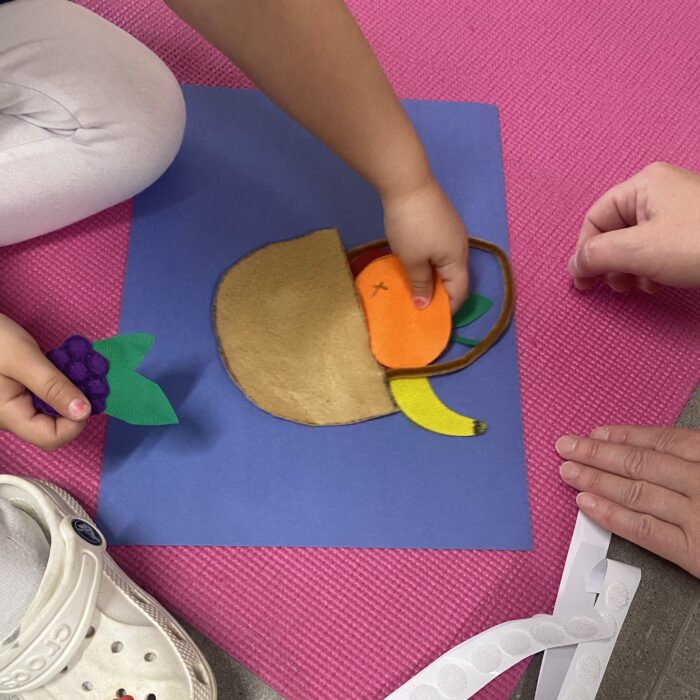Artasia at Heritage Green St. James
EarlyON
🖌️ Artist Educator: Jazmin Vega Rodriguez
Week 1 - It Is The Process That Matters
During an Artasia badges workshop, a mother attended with her 15-month-old child. She expressed concern, feeling that her child was too young to complete the task at hand. Perhaps the array of materials and the expectation of a finished product felt overwhelming to her. Sensing this, Paula, the EarlyON coordinator, gently reassured the mother. She explained that the true value of the workshop lay not in producing a polished piece of art but in the opportunity for children to explore and experiment with different materials.
Paula emphasized that the process of creating—engaging with textures, colours, and tools—was far more important than the final outcome. The day’s experience served as a powerful reminder that art is not just about producing a perfect piece to display. Instead, the most meaningful lessons come from the creative journey itself. By encouraging young children to experiment freely, we nurture their imagination and creativity.
This interaction also raised an important question: How can artist educators better support parents, helping them feel more comfortable and less overwhelmed when participating in art programs with their very young children?
Week 2 - Embracing Process Art In Our Communities
This week, I had the pleasure of introducing process art to the families and children who frequent the EarlyON centre, particularly those with little ones from birth to 2 years old. Knowing that many caregivers might feel uncertain about involving their very young children in art activities, I made it a priority to create a welcoming space that encouraged everyone to participate.
In our dedicated area for material exploration, the youngest children were invited to paste pieces of fabric onto an adhesive surface. To enhance their experience, I had prepared pre-cut fabric pieces in various shapes, making it easy for even the smallest hands to engage with the materials. The open and inclusive nature of our art space didn’t just appeal to the toddlers—older children who were playing outside were drawn in, too. They eagerly asked if they could join in and make their own flags, turning our session into a vibrant, multi-age art experience.
The images from this week beautifully capture the different ways children expressed their creative voices. Embracing process art in our communities allows children to explore different materials and express their creativity without the pressure of producing a perfect final product. By focusing on the joy and discovery of the process, we give children the freedom to explore and experiment, nurturing their creativity in a supportive and inclusive environment.
Week 3 - Surprising Colours
Learning flower pounding turned out to be a delightful experience for the children as they eagerly watched the colours unfold. As they began pounding flower petals and leaves against the white fabric using rocks, they were thrilled to see the yellow and green pigments gradually appear on their canvases.
The workshop started with a demonstration by the artist educator, allowing both children and caregivers to observe the flower printing technique in action. This demonstration proved invaluable, as it gave the little ones a chance to see and then mimic the technique on their own fabrics.
To enhance their experience, the children placed wax paper over the flowers, enabling them to clearly see the exact positioning of their petals before pounding. This see-through effect added an extra layer of excitement as they anticipated the results.
In addition to using flowers, the children were also given the opportunity to explore markers and bingo dabbers for printing purposes. The combination of these materials led to the creation of fun, vibrant designs, adding even more joy and creativity to the process.
Week 4 - Making Spiders to Face His Fears
What started as a session to create fashion pieces and accessories took an unexpected turn when one child found inspiration in beads—specifically, emerald green ones. This little boy, who had a fear of spiders, decided to face his fears head-on by making a not-so-scary spider.
It’s always remarkable to see what happens when children take the reins of the creative process—the results can be truly surprising. Without hesitation, he reached for pipe cleaners and green beads. As he worked, he began talking about spiders and how they frightened him, yet he was determined to craft a large black spider with shiny green eyes. At first, I was tempted to guide him back to the planned activity of making fashion items, but I chose to listen instead.
When he finished, he proudly announced that he was no longer afraid of spiders. He left the session with two big spiders in hand and a beautiful handmade necklace—a testament to the power of creativity in overcoming fears.
Week 5 - Finding the Right Ingredients
This week was notably quiet, which gave me the chance to observe the interactions between parents and children more closely. The connection between a mother and her young daughter stood out as they worked together to create a beautiful fruit salad. Their shared focus and enjoyment were truly inspiring.
In contrast, another mother faced challenges in getting her child to sit still long enough to engage with the activity. I admired her perseverance and suggested she take the materials home to try again at her own pace. These observations made me appreciate the dedication artist educators place in preparing materials in advance. I had hoped that incorporating the use of velcro pieces might make the process smoother, but it didn’t work as well as I had anticipated. This experience was a reminder that trial and error are integral to discovering effective strategies. While there is no one-size-fits-all solution, these moments of observation provide valuable insights and inspire us to explore new approaches, continually enhancing the art experience for everyone involved.
Jazmin can be found on LinkedIn here.
